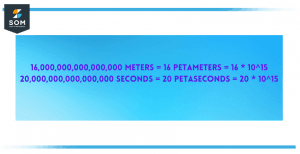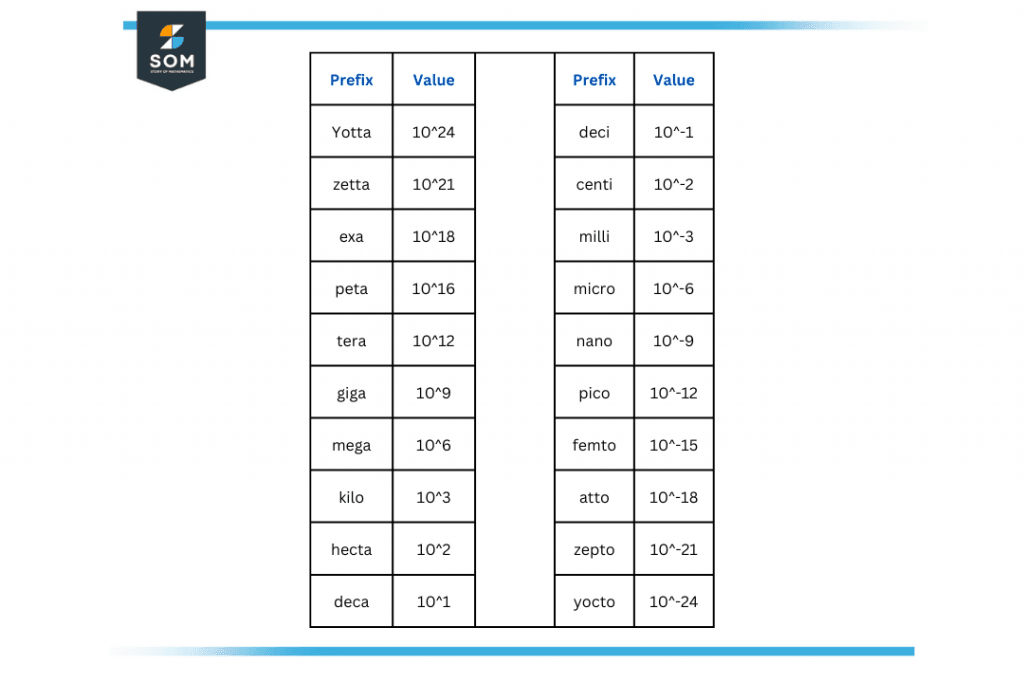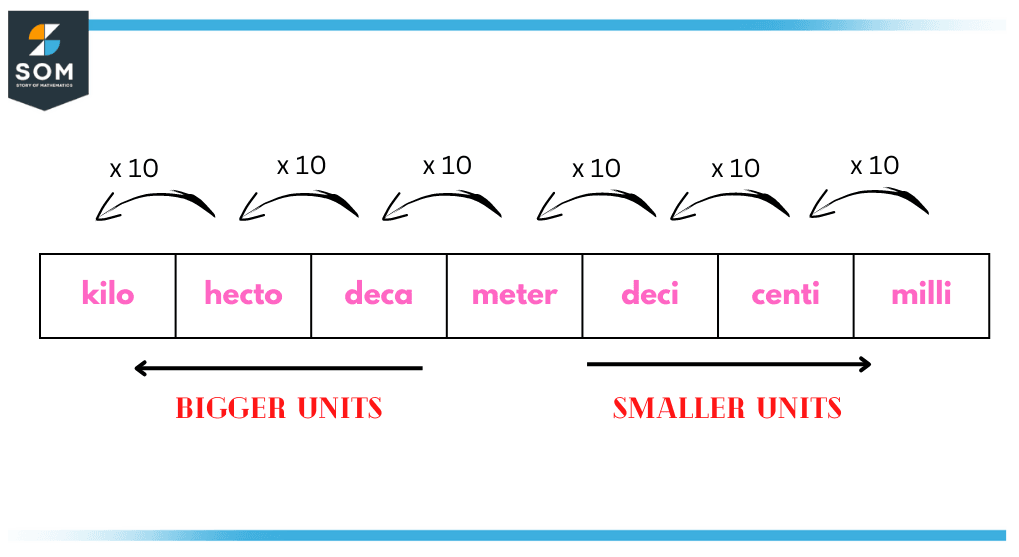JUMP TO TOPIC
Peta|Definition & Meaning
Definition
Peta is a decimal unit prefix meaning 1 quadrillion (1015). It is denoted by P. Peta was added to the international system of units (SI) in 1975. Peta is used as a prefix in place of the fifth power of 1000. In physics, instead of multiplying a number by 1,000,000,000,000,000, we can simply use Peta as a prefix.

Figure 1 – Different Conversions of Peta Prefix
What Are Prefixes?
A prefix is a specific term or word that is used before any sort of quantity to enhance or modify its meaning. Prefixes help us to express very large or very small quantities. Using prefixes makes the quantity easy to read and elaborate.
Instead of using a very large(or small) number of zeroes, one can simply add any prefix to make the quantity understandable such as one tera representing 1,000,000,000,000 (trillion) and one pico representing 0.000,000,000,001 (trillionth).
Hence, we can use tera in place of trillion and pico in place of trillionth.
Prefixes play a broad role in physics and mathematics because both fields deal with measuring quantities, and by using prefixes, it becomes easy to represent any unit.
There is a total of 20 SI prefixes that are commonly used. Namely,

Figure 2 – Table of Prefixes
What Are SI Units?
SI unit is an international system of measurements that are used universally in scientific and technical research to abstain from confusion and uncertainty. To have a standard system of units, it becomes convenient to understand and recognize the measurements in one set of unit systems. Meter, kilogram, second, and ampere are SI units of length, mass, time, and current.
SI units are of two types:
Base units are the fundamental units. All the other SI units are derived from these. Therefore base units are also known as the building blocks of the system. There are 7 base SI units i.e., meter (m), kilogram (kg), second (s), ampere (A), kelvin (K), mole (mol), and candela (cd).
Derived units, as the name indicates, are derived from base units. they are infinite in number as they are formed by applying different techniques on base units. Newton (kg.ms-2), hertz (s-1), coulomb (s.A), and ohm(kg.m2.s-3.A-2) are the units of force, frequency, electric charge, and resistance.
Using Prefixes With SI Units
Now we discuss how to use prefixes with these SI units.
First, we talk about length.
some units of measuring length are mega meter (Mm) = 10002 meters, kilometer (km) =1000 meters, millimeter(mm) = 1000-1 meters, picometer (pm) = 1000-4 meters, Petameter (Pm) = 10005 meters, etc.
some common units to measure weight are hectogram (hg)= 10002/3 grams, kilogram (kg) = 1000 grams, decigram (dg) = 10001/3 gram, nanogram (ng) = 1000-3 gram, Petagram (Pg) = 10005 gram, etc.
some common units to measure electric current are mega ampere (MA) = 10002 ampere, pico ampere (pA) = 1000-4 ampere, Peta ampere (PA) = 10005 ampere, nano ampere (nA) =1000-3 ampere, etc.
In the same manner, we can make use of prefixes with different units.
Metric System
The Metric system emerged in 1799, during the French revolution. A Metric system is a system that is used to measure distance, length, volume, weight, and temperature. It is a smaller, more precise, and more effective system to use. This system is based on three units.
Meter (m) – unit of length
Kilogram (kg) – unit of mass
Second (s) – unit of time
These three units can be used to measure almost every quantity that is in use today. The Metric system is easy to understand and operate as compared to the SI system which is a pity-wide system to use.
There are some quantities whose units are based on the kilogram, meter, and second such as area (unit: m2), volume (unit: m3), density (unit: kg/m3), speed (unit: m/s), etc.
Advantages of Using SI Units
- It is a coherent system.
- It is a logical and well-organized system.
- It is easy to understand.
- It makes difficult quantities easy to comprehend.
- SI system is the metric system.
- Easy to convert from one unit to another.
- Prefixes are the same for all units.
- It is the whole system of units.
- It has removed the communication gap.
- It is based on the decimal system.
Disadvantages of Using SI Units
It mainly focuses on one unit, so other units are neglected.
It cannot always accurately define a quantity.
How To Convert Prefixes
Learn the meaning of both the units between which conversion is going to be made. Using this knowledge, you can convert between any given prefixes easily.
For example, if you want to convert centi into milli, you must know (a) the value, and (b) what milli represents. Now, we know that centi represents 10-2 and milli represents 10-3. To convert centimeters into millimeters, remember the conversion ratio, i.e., 1 centimeter is equal to 10 millimeters.
If we have to convert 20 centimeters to millimeters, we multiply 20 by 10, i.e., 20*10 = 200 millimeters.

Figure 3 – Different Conversions of Meters
By using these three steps, conversions can be made from one unit to another.
Convert Peta To Tera
Consider another example, convert 50 Peta to tera.
The first step is to know the values of Peta and tera. Peta represents 1015 and tera represents 1012.
The second step is to know the conversion ratio, i.e., 1 Peta is equal to 1000 tera.
The last step is to perform the required operation. Since we want to convert the larger prefix units into the smaller units, so we multiply the number, i.e., 50 Peta, by 1000 to get the required result. 50 *1000 = 50000 tera.
Convert Peta To Giga
15 Peta to Giga:
1 Peta = 1000,000 Giga
15 Peta =15 * 1,000,000 Giga = 15,000,000 Giga
Convert Peta To Mega
0.01 Peta to mega:
1 Peta = 1,000,000,000 mega
0.01 Peta = 0.01 * 1,000,000,000 = 10,000,000 mega
Convert Peta To Kilo
75 Peta to kilo:
1 Peta = 1,000,000,000,000 kilos
75 Peta = 75 * 1,000,000,000,000 = 75,000,000,000,000 kilo
Solved Example
Let us consider an example of a power plant, under normal circumstances, produces 200 PWh. How much energy is that?
Solution
The symbol PWh stands for Peta watt per hour. P stands for Peta i.e 1015, Peta watt per hour means that 200,000,000,000,000,000-watt electricity per hour. Suppose that an average light bulb consumes 20 watts per hour. If we divide the power produced by the power plant by the energy consumed by a light bulb per hour, we come to the conclusion that the plant provides energy enough for 10,000,000,000,000,000 light bulbs per hour.
All images/mathematical drawings were created with GeoGebra.
